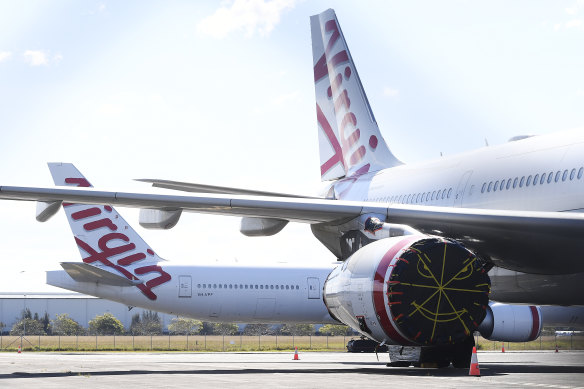
Why the promised airfare price relief looks like a mirage
Last month, Qantas noted domestic capacity was at 90 per cent of pre-COVID levels and would be 103 per cent by the end of June. And recent comments from Virgin commercial chief Dave Emerson suggest the airline is already close to pre-pandemic capacity.
But the traffic numbers from Sydney Airport tell a somewhat different story.
In April 2022, 1.9 million people travelled through Sydney’s domestic airport but almost a year later in February 2023, this number was 1.7 million.
These are the raw numbers, and they don’t lie.
It is this stalled growth in capacity that Culbert appears to suggest might be crimping demand for air travel.
Loading
And it is the sluggish increase in capacity that is allowing airlines to hold prices higher for longer.
Qantas was clear about constraining its capacity in the second half of calendar 2022 because its service levels had deteriorated sharply.
But it also threw higher fuel prices into the mix of reasons it had to keep fares high.
When Qantas began highlighting the oil price, it was justified. The oil price had risen to around $US120 ($179) in the fallout from the war in Ukraine. But that burden is no longer an issue with the oil price having fallen to the low $US70s as investor concern has turned to a slowdown in the world economy.
Capacity has certainly not responded to the fall in the oil price.
As a result, the airlines are in clover. Virgin is finally in the black again and Qantas is making an obscene amount of cash.
And the ACCC report findings raise questions about the airlines’ incentive for the airlines to increase capacity.

Whether Virgin gets to capitalise on this period of elevated profit depends on equity markets.Credit:Getty Images
“In January, 4.4 million passengers flew within Australia, which is 89 per cent of pre-pandemic levels. Higher capacity and a seasonal reduction in demand resulted in more empty seats, leading to a fall in the industry load factor from 83 per cent in October 2022 to 75 per cent in January 2023,” the ACCC report noted.
It is just the kind of profit purple patch that Virgin would want to use to proceed with its mooted public offering. Whether Virgin gets to capitalise on this period of elevated profit depends on the state of the equity markets.
Right now, any company looking to push the green button on an IPO would risk a poor outcome thanks to the volatile sharemarket, which is being buffeted by a banking crisis on both sides of the Atlantic.
And if the economy continues to slow under the burden of high rates and steepening cost of living, the airline industry will eventually feel a slowing in demand – regardless of how keen we are to return to the air.
The Business Briefing newsletter delivers major stories, exclusive coverage and expert opinion. Sign up to get it every weekday morning.
Stay connected with us on social media platform for instant update click here to join our Twitter, & Facebook
We are now on Telegram. Click here to join our channel (@TechiUpdate) and stay updated with the latest Technology headlines.
For all the latest Education News Click Here
For the latest news and updates, follow us on Google News.

